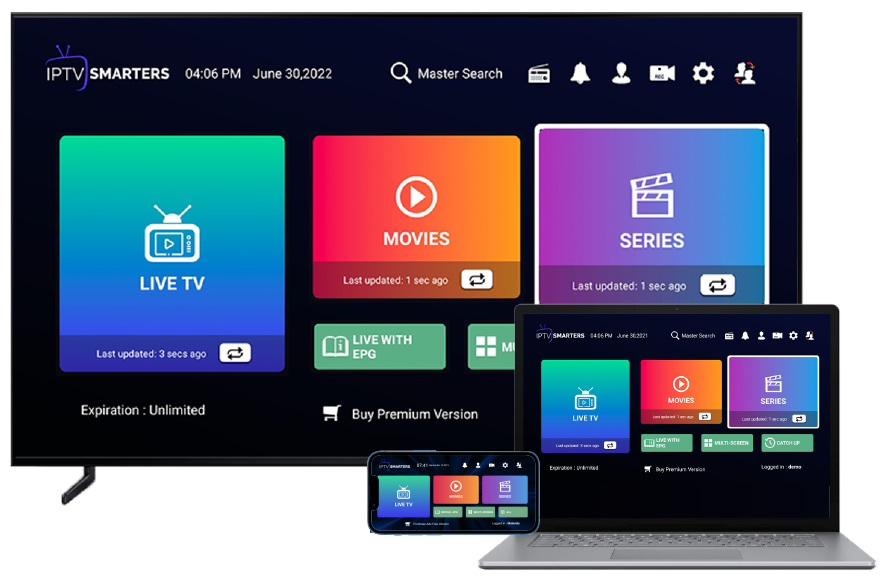Update Your Home Entertainment: Budget-friendly IPTV Subscription Packages
Update Your Home Entertainment: Budget-friendly IPTV Subscription Packages
Blog Article
Exactly How IPTV Works: A Step-by-Step Guide to Web Protocol Tv Technology
Internet Method Television (IPTV) has actually transformed the means we eat television web content, offering a new realm of opportunities via the power of the internet. From the essential concepts of IPTV to the intricate procedure of web content distribution, each step plays a critical duty in ensuring a seamless viewing experience.
IPTV Basics
In understanding IPTV fundamentals, it is crucial to grasp the fundamental workings of this modern technology in delivering television material over the web. IPTV, which means Internet Protocol Television, utilizes Internet Protocol (IP) networks to transmit tv web content to customers' gadgets. Unlike typical methods of relaying tv material with cable television or satellite signals, IPTV streams media via high-speed net links.

Moreover, IPTV enables for interactive capacities, such as video clip as needed (VOD) and electronic program guides (EPG), enhancing the user experience by providing even more control and versatility in accessing content. On the whole, comprehending the fundamentals of IPTV sets the foundation for discovering its advanced capabilities and the benefits it supplies to modern tv intake.
Web Content Distribution Refine
Reliable web content distribution in IPTV systems involves a well-structured process that guarantees smooth transmission of television web content over IP networks. The web content shipment process in IPTV starts with the creation of the video clip content, which is after that encoded right into digital style appropriate for IP transmission. This encoded web content is then safely kept on servers referred to as media servers. When a customer requests specific web content, the IPTV system gets the asked for data from the media web servers and supplies it to the audience's tool over the internet.

Middleware Capability
With the combination of middleware, IPTV systems gain improved performance that streamlines user interaction and material management. One of the essential functions of middleware in IPTV is to allow individualized user experiences by supplying functions such as interactive my company program guides, video-on-demand services, interactive advertising, and individual choices administration.

Tool Compatibility
Offered the essential duty of middleware in making it possible for seamless interaction and material monitoring in IPTV systems, a crucial facet to consider is the compatibility of tools used for accessing the IPTV services. Gadget compatibility is important for making certain a smooth customer experience and optimal efficiency when accessing IPTV web content.
In the context of IPTV, tool compatibility refers to the capability of a gadget to efficiently communicate with the IPTV solution, present material correctly, and support the required protocols and codecs for streaming video clip material over the web. Different tools, such as check over here wise Televisions, set-top boxes, smartphones, tablet computers, and computer systems, may have differing degrees of compatibility with IPTV solutions.
To make sure a smooth viewing experience, it is very important for customers to select devices that are suitable with the specific IPTV solution they are utilizing. Additionally, IPTV provider need to advice use support for a broad array of gadgets to accommodate the diverse needs of their individual base. By prioritizing tool compatibility, both individuals and company can enhance the general IPTV experience.
Quality of Solution (QoS)
Considering the important function of preserving a high standard of performance and dependability in IPTV systems, guaranteeing regular Quality of Solution (QoS) continues to be a fundamental facet of the customer experience. QoS in IPTV refers to the ability of the system to provide web content with minimal interruptions, high resolution, and quickly filling times. To accomplish optimum QoS, various aspects require to be addressed. Network data transfer is crucial to sustain top quality video clip streaming without buffering or pixelation. In addition, latency, jitter, and packet loss should be lessened to boost the watching experience.
Provider employ QoS mechanisms such as traffic prioritization, buffering, and mistake correction to keep a stable IPTV solution. By focusing on IPTV website traffic over much less time-sensitive information, companies can ensure smooth playback even throughout top use hours. Buffering aids make up for network fluctuations, while error correction techniques improve information integrity.
Continuous surveillance and optimization of QoS specifications are necessary to adapt to altering network problems and user needs. Inevitably, a robust QoS framework is crucial for providing a seamless and enjoyable IPTV experience to customers.
Conclusion
In conclusion, IPTV operates with the transmission of television material over net procedure networks. Quality of Solution plays a critical duty in preserving the effectiveness and integrity of IPTV solutions - IPTV subscription.
Report this page